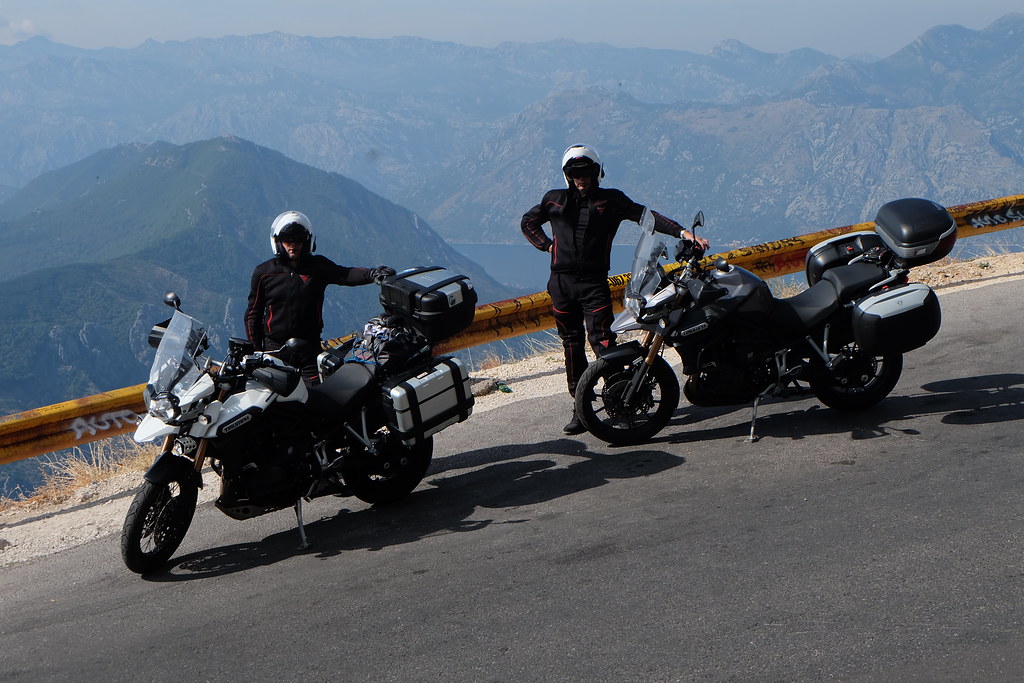When the plane descends over the Martial Mountains and lands safely, the passengers clap and cheer. This display of gratitude becomes my welcome to Ushuaia, known appropriately in Spanish as fin del mundo, the ‘end of the world’. Located at the southernmost tip of Argentina, Ushuaia is the remote port from which many expedition cruise passengers leave for Antarctica. But before I join them, I want to see as much of the legendary Tierra del Fuego (Land of Fire) as I can.
Despite an influx of travellers, Ushuaia has the history and feel of a frontier town. Its colourful early past includes a failed goldrush and a prison modelled, incredibly, on Tasmania’s convict experience.
Next morning I’m picked up from my hotel by guide Juan and we head for the southern entrance of Tierra del Fuego National Park, just twenty minutes from Ushuaia. The park covers a total area of 63,000 hectares and is bordered in the west by the Chilean border, in the north by the extensive Lake Fagnano and in the south by the Beagle Channel. The park is home to an impressive 20 species of mammals and 90 bird species.
Today we’re in the region of the Beagle Channel, named after the British ship HMS Beagle, which came here in 1832 with its famous passenger Charles Darwin. We stop at Lapataia Bay, a beautiful fjord connected to the channel, which is surrounded by ancient sub-Antarctic forests.
Lapataia means ‘wooded bay’ in the language of the indigenous Yaghan people. The area has prolific birdlife, including upland and ashy-headed geese, ducks, albatross and oystercatchers. We also get close to some small birds, including the thorn-tailed rayadito. A highlight is spotting a Magellanic woodpecker nearby, which produces a flurry of camera action.
From the bay we move to the forest, where the flora is equally fascinating. Trees include the world’s southernmost conifer and three kinds of beech. Winds are so strong that exposed trees grow twisted from the force. Juan tells us that they are called ‘flag trees’ because of the shape they take in their struggle with the wind.
Juan also points out strange, orange, golf ball shapes in the trees. They turn out to be colourful parasitic fungi named after Charles Darwin, who collected them during his visit. We also see a rare dog orchid and swathes of unusual fachine flowers. We walk beside large expanses of colourful peat tundra before driving inland to hike beside the Pipo River.
This easy hike reveals some stunning vistas of the surrounding mountains, which are the southernmost section of the Andes range. The dark greens of the countryside bring the snow-capped peaks into stark relief as we reach the last scenic point for the day at the dramatic Rio Pipo Cascades.
Next morning I’m off to the northern section of the national park at Lake Fagnano. To get there we travel on national route 3, stopping to see a magnificent view of the lake at Garibaldi Pass. Then we take some rough off-road tracks similar to those I’ve travelled in the Australian outback. We stop at a dam created by beavers, which were unfortunately introduced from North America in the 1940s. The beavers, which have no natural predators in the region, cause havoc as they kill trees by raising the water level around their roots.
Lake Fagnano turns out to be big – very big. In fact, at over 100 kilometres long it’s one of the largest lakes in the world, occupying a geological depression that separates the South American and Scotia tectonic plates. The size of the lake becomes apparent as we wind down the hill to the water’s edge.
After a snack by the lake, we walk in the primeval forest before continuing on the four wheel drive track to Lake Escondido. Despite overcast and slightly choppy conditions, we manage some canoeing on the water, followed by an excellent Argentine wood barbecue and some welcome malbec.
The return journey to Ushuaia turns out to be as exciting as the trip out, providing a lasting memory of the rugged, starkly beautiful Patagonian countryside.
John Maddocks travelled courtesy of Tierra Turismo.
Getting there: Latam and Aerolineas Argentinas fly from Buenos Aires to Ushuaia.
Staying: There are numerous 3-5 star hotels in Ushuaia. I stayed at the centrally located Hotel Albatros (4 star). http://www.albatroshotel.com.ar/?lang=en
Getting around: Tierra Turismo offers a number of tours from Ushuaia in both summer and winter https://tierraturismo.com/home/
Words and images: John Maddocks














